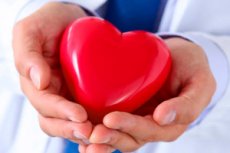New publications
Researchers have developed a hydrogel alternative to pacemakers
Last reviewed: 02.07.2025

All iLive content is medically reviewed or fact checked to ensure as much factual accuracy as possible.
We have strict sourcing guidelines and only link to reputable media sites, academic research institutions and, whenever possible, medically peer reviewed studies. Note that the numbers in parentheses ([1], [2], etc.) are clickable links to these studies.
If you feel that any of our content is inaccurate, out-of-date, or otherwise questionable, please select it and press Ctrl + Enter.

Myocardial infarction is a life-threatening condition, with patients remaining at risk of premature death long after the attack itself - 50-60% of patients die subsequently as a result of sudden cardiac death caused by arrhythmia.
The most effective treatment at the moment is a pacemaker, which stops cardiac arrhythmias. However, it cannot prevent them from recurring. Researchers from the University of Erlangen-Nuremberg (FAU) and the University of Bonn have developed a gel that should do just that.
Heart attacks remain life-threatening even after the attack itself. A heart attack is not only an acutely life-threatening condition, but also comes with serious long-term health risks. Why is this so?
"The problem lies in the scars that form as a result of the infarction. Unlike healthy tissue, they disrupt the electrical signals, thereby preventing the cardiomyocytes from communicating effectively and contracting synchronously," explains Felix B. Engel, Professor of Experimental Kidney and Cardiovascular Research at FAU and the University Hospital Erlangen.
Pacemakers only treat symptoms, not the underlying problem.
The most effective treatment to date for stopping cardiac arrhythmias and preventing sudden cardiac death is surgical implantation of a device known as a pacemaker. They are also called implantable cardioverter-defibrillators, or ICDs.
They recognize ventricular arrhythmias and deliver an electrical shock to the heart, returning it to a normal rhythm. The problem is that pacemakers cannot prevent the underlying problem, which is the occurrence of cardiac arrhythmias.
In addition, frequent pacemaker beats continue to damage the heart, causing significant mental stress in patients and impairing their quality of life.
Gel for the prevention of cardiac arrhythmia
A team of researchers from FAU has developed a hydrogel consisting of collagen as an effective and well-tolerated carrier and the electrically conductive substance PEDOT. This gel should prevent cardiac arrhythmias.
How does it work? “We can inject the gel directly into the scar tissue of the heart. This essentially ‘electrifies’ the heart tissue, allowing the cardiac myocytes to communicate effectively with each other again,” explains Dr. Kaveh Roshanbinfar, a postdoctoral fellow in Engel’s group and lead author of the study published in the journal Advanced Materials.
It will be some time before the gel becomes available. Initial experiments in animal models have shown that the hydrogel successfully prevents arrhythmias and ventricular tachycardia, possibly making the high-energy shocks delivered by ICDs unnecessary. However, much more research is needed before patients can use the hydrogel.
Professor Felix Engel explains: "One aspect is that the scars left behind in humans after a heart attack are much more complex than in mice, for example. Another factor is that we are not sure how the human immune system will react to the hydrogel."
Once this is determined, the collagen-PEDOT hydrogel could first be tested in high-risk patients who find the high-energy shocks of ICDs particularly burdensome.
